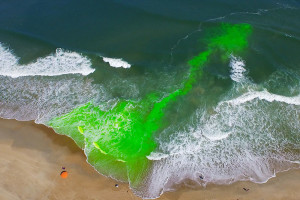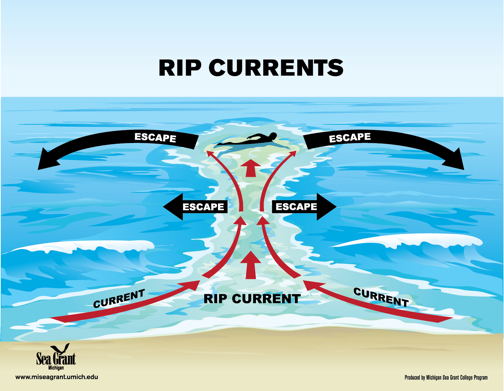Rip currents are common on the OBX, so it’s important to educate yourself about them. We’re learning more about rip currents all the time and it may be that much of what was thought to be common knowledge was not quite right. At the center of the new findings is an Outer Banks lifeguard and a Coastal Studies Institute scientist, as reported by Kip Tabb in the North Beach Sun.

“It took a bright green dye dumped into the ocean to capture the public’s attention and illustrate what a rip current looks like and how powerful it can be.
In September, Kill Devil Hills Ocean Rescue Supervisor Dave Elder, John McCord of the UNC Coastal Studies Institute and Benny Baldwin of Baldwin Video Productions found the perfect rip current just off the beach in Kill Devil Hills. They released green dye in the water and McCord started filming from a drone up above.
It’s fluorescein, an EPA approved dye for the water,” says McCord.
The path the dye takes as it shoots out to sea proves that much of what we think we know about rip currents may not be exactly right.
A quick glance at the pattern of the dye shows it going almost straight out to sea, with a slight tilt to the south. That’s not what those familiar rip current posters illustrate. “The standard rip current that you look at, that you see in one of those pictures is a mushroom cloud. That dates back to the 50s,” says Elder. “That’s not what’s in the picture.”
[box type=”bio”] The science of rip currents goes high tech and visually stunning as reported in the North Beach Sun.[/box]
